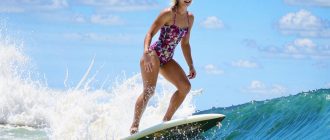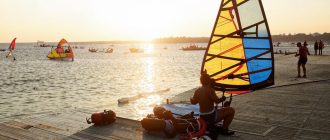The leader of longboarding development in Russia answers.
You’ve certainly asked yourself the question “How can you get around in the city for short distances?”. You can use your own legs and set records for steps traveled, you can use public or private transportation. And there’s also the option of crossing intersections, avenues and parks using a different method. One that doesn’t require gasoline and helps you stay in tone.
The asphalt outside is almost dry, which means it’s time to start thinking about getting your first longboard, if you haven’t already.

leader of longboarding development in Russia, world champion in longboard dansing and freestyle.
I will tell you how to choose a longboard for cruising, densing and freestyle. In general, I will touch on freeride and downhill. It is important to understand that these directions are more complex and voluminous, so you need to understand them in detail. Experienced guys advise beginners to start diving into high-speed directions with freeride – there are slightly less requirements to the set of accessories.
Parameters of longboards
Boards (decks) have several parameters: the method of suspension attachment, length, shape, concave and flex.
Suspension attachment method
- Drop-through – the suspension is attached through the board and the longboard becomes lower, which makes it more stable and reduces the load on the front foot. Suitable for long cruising on flat surfaces. Such boards used to be popular for downhill, but are rarely used now.
- Top-mount – the suspension is attached under the deck, a universal option.

What length should a longboard be
On average, longboards come in lengths from 22 inches (59 cm) to 50 (127 cm). The longer the longboard, the more stable and easier to control. The smaller, the more maneuverable. I don’t recommend buying boards up to 30 inches (76 cm) long: they are too short for comfortable riding, and it will be difficult for a beginner to ride them.
For freestyle, the most common lengths are from 37 inches (94 cm) to 46 (117 cm), for dansing – from 42 (107 cm) to 50 (127 cm). For cruising you can choose any length depending on the desired feeling: longer boards will give the feeling of surfing on asphalt, shorter boards will be more compact and maneuverable. Width is usually not taken into account.
For freeride, a beginner’s board with a length of 34 inches (87 cm) to 40 inches (102 cm) and a width of 9 inches (23 cm) to 9.75 inches (25 cm) will be fine.

Conclave
The conclave is the curve of the deck surface.
Rocker is the part of the conquave when the deck is curved downward. Classic variation.
Camber is the part of the conquave where the deck is curved upwards, sometimes used for cruising, but it is not very comfortable.
The most common conquaves are U-shaped, W-shaped, flat, microdrop and mixed. U-shaped is the universal option, flat is for cruising, densing and freestyle. W-shaped, microdrop and mixed for speed disciplines.

Flex
Flex is the stiffness of the board. Typically boards come in soft, medium and stiff. The softer the board, the more it absorbs the bumps in the asphalt. The stiffer the board, the more stable it is at higher speeds. Accordingly, for speed disciplines you should choose stiff boards, and for everything else, medium and soft boards are suitable.
Shape
Longboards come in a variety of shapes, the most universal of them, suitable for any style of riding – a symmetrical deck with two large teils (tails). Thanks to the tails, you can perform tricks, ride off curbs and lift the longboard off the asphalt with a single click. If you are looking for a compact option, it is desirable that the board has at least one teil – usually this shape is called “fish”.
In short, the ideal longboard for cruising, denshing and freestyle – Top-Mount, has at least one teil, medium flex, moderate conquive or no conquive. Choose the length relative to your tasks.
For freeride, choose stiff boards with deep conquave, 34 inches (87 cm) to 40 inches (102 cm) long.

Which wheels are right for a beginner
Wheels have several parameters: diameter, stiffness, contact patch and shape.
Diameter
The bigger the wheels, the more roll they have. But the harder they are to push and the longer it takes to accelerate. The smaller the wheels, the less roll they have, but the easier they are to push.
Larger wheels have better rideability (they are better at overcoming pebbles, tiles and other bumps), but with these wheels you will probably have to use a spacer (a plate between the suspension and the board) to avoid the wheels coming into contact with the board when turning hard (“snagging”), which will make the longboard taller and increase the load on the support leg when pushing off.

Smaller wheels make the board lighter, which makes it easier to do tricks. This reduces the load on the supporting leg when pushing off.
The most universal diameter is 65 mm, which is suitable for cruising, freestyle, densing and freeride. If you have a lot of tiles and bad asphalt in the city, choose 70 mm wheels. If you have good asphalt and plan to focus on freestyle, you can go for 60-62mm wheels to make it easier to longboard and perform tricks. Larger diameter wheels – 75 mm and above – are usually used in downhill.
Stiffness
The softer the wheels, the more comfortable the ride, and the stiffer the wheels, the faster they go on flat surfaces (such as concrete), more durable and easier to slide – sliding to a stop.
Longboards usually use wheels with a stiffness of 77a – 86a (the higher the number, the stiffer the wheels), I recommend choosing in the 77a – 83a range. They will be suitable for absolutely all directions.

Shape
There are rounded and square lip wheels. “Square” wheels have a larger contact patch, which gives them a better grip on asphalt: suitable for downhill, slalom and cruising. Rounded wheels weigh less, are easier to slide off and are generally more versatile.
Contact patch
The wider the contact patch, the more grip the wheel has on the asphalt – this is important for downhill and slalom. Ideal wheels for beginners are 65mm diameter, 77a to 83a stiffness with a rounded lip, contact patch is not important.

What the suspension should be
Suspensions have several parameters: type of kingpin (main bolt location), class, size and grade.
Types
- RKP – reversible kingpin, these suspensions are most commonly found on longboards.
- TKP – Traditional Kingpin, these suspensions are used for skateboards and small cruisers.
Reverse kingpin suspensions are smoother and more stable, giving you the feeling of surfing on pavement.

Size
Typically, longboards use suspensions that are between 150mm and 200mm wide. The wider the suspension, the more stable and less maneuverable the longboard is.
Longboards from 9 inches (23 cm) wide and up use 180 mm (the most popular value), smaller cruisers may have narrower suspensions.
Degrees
The larger the suspension degree, the more maneuverable the longboard, the smaller the suspension degree, the lower and more stable the longboard. For cruising, densing and freestyle, 48-52° suspensions are used, for freeride 44-50°. A beginner may not worry about the suspension class, high class suspensions are expensive and are used by professionals.

The ideal suspension for a beginner with a longboard width of 9 inches (23 cm) or more is RKP, 180 mm, 48-52°.
Ready-made kit or do it all yourself
Experienced riders always assemble their own boards. If you understand the question and understand exactly what you need, it is better to assemble a longboard yourself. But if you find it difficult to understand all the subtleties of each of the components, there is nothing wrong with buying a ready-made longboard.

To save money or not
The deck and suspension are extremely important components: the better they are, the more enjoyable the riding experience will be. A cheap deck can break quickly, and the suspension can work badly (not turn or, on the contrary, to the sides).
You can save money on wheels – there are no frankly bad wheels. Therefore, you can choose them by color or price, based on the required parameters.






